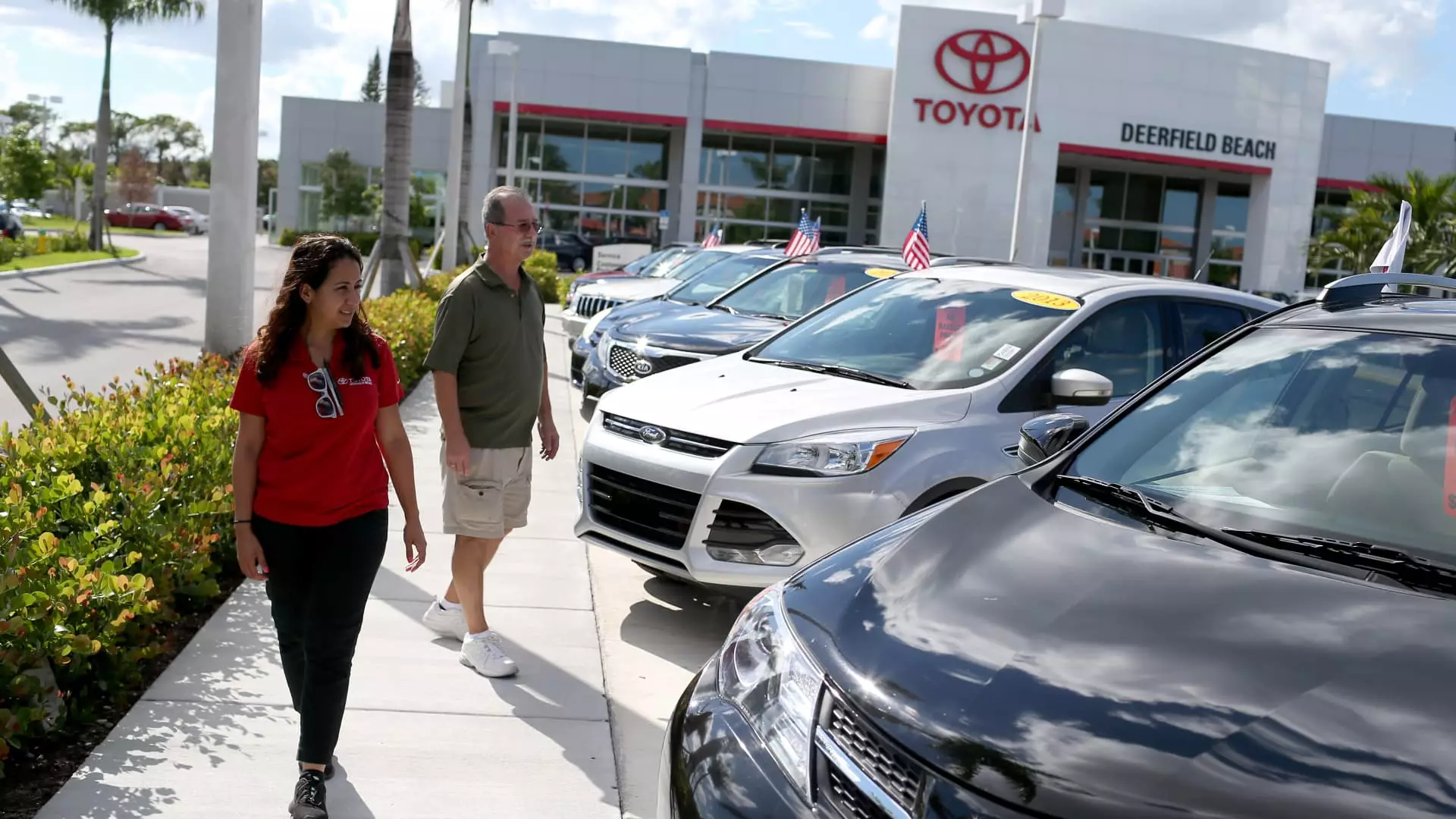As we navigate the complex landscape of the U.S. automotive market, a tempest brews in the form of President Donald Trump’s 25% auto tariffs on imported vehicles. This move, while perhaps intended to bolster domestic production, threatens to disrupt a market already reeling from the pandemic’s chaos. Analysts from Cox Automotive have churned out forecasts that foretell a grim scenario: prices for both new and used vehicles are set to skyrocket. The ripple effects of these tariffs extend beyond new car purchases, raising questions about future affordability and market accessibility.
The Financial Impact on Consumers
A staggering increase in vehicle prices—potentially as much as $6,000 for imports and $3,600 for domestically assembled vehicles—places a heavy financial burden on consumers. Such figures are not mere numbers; they represent tangible barriers that could deter many middle-class families from making a purchase altogether. This 25% tariff on imports, coupled with additional levies expected on auto parts, may serve as an economic chokehold on an already strained populace. The average American, seeking to acquire a vehicle, faces a harsh reality: not only will they encounter inflated prices, but also dwindling incentives as discounting diminishes and market supply tightens.
This shift comes at a time when inflation pressures have already eroded purchasing power. As prices escalate, the tarred relationship with the automotive sector—one that many Americans hold dear—will face scrutiny. The economic implications are profound; a vehicle is not merely a means of transport but an essential asset in achieving personal and financial autonomy.
How Automakers Are Adapting
The automotive industry’s response has been a study in contrasts. Domestic manufacturers like Ford and Stellantis have sought short-term relief by implementing temporary pricing deals aimed at preserving consumer interest. On the flip side, foreign manufacturers like Jaguar Land Rover have halted U.S. shipments altogether, a decision that could alienate potential customers and diminish brand loyalty. Each manufacturer’s strategy highlights an underlying truth: the stakes are high, and survival in this tumultuous environment requires swift adaptability.
Meanwhile, car makers like Hyundai are opting to delay price increases, indicating an awareness of the mounting consumer anxiety. They recognize that a fragile market needs nurturing rather than exploitation. This duality—ranging from benevolently positioned price delays to the self-interested responses of others—reveals a fractured industry navigating uncertain waters.
Used Vehicle Market: A Volatile Future
The used vehicle market is far from insulated from this turmoil, despite the absence of direct tariffs affecting it. With new vehicle prices inflating, consumers may increasingly turn to used cars, but this demand will only serve to inflate used car pricing, which Cox Automotive predicts will rise significantly—between 2.1% and 2.8%—by year’s end. While earlier forecasts expected stability, this shift underscores the volatility that characterizes the current landscape.
The intricate relationship between the prices of new and used vehicles cannot be overlooked. As new car production declines and prices soar, used cars become the fallback option for many. Increased competition for used vehicles at auctions exacerbates this volatility, leading to a market not unlike the unprecedented ebbs and flows witnessed during the pandemic. It’s an unsettling echo of that past chaos, leaving both dealers and consumers anxiously eyeing market trends.
Consumer Behavior and Market Outlook
The probability of declining car sales looms larger than it did prior to the tariff announcements. A significant portion of potential buyers may simply withdraw from the market, waiting for conditions to stabilize. This hesitation has a cascading effect: as demand falters, the market may house an influx of unsold vehicles, creating an unprecedented stagnation.
The projection that production of new vehicles will slow further compounds this dilemma, ultimately raising concerns about depletion in vehicle options over time. Jonathan Smoke, Chief Economist at Cox Automotive, aptly describes the situation as a “roller coaster ride,” a phrase that resonates deeply with consumers feeling the ups and downs of economic pressures.
The Bottom Line: Political Ramifications and Future Implications
Ultimately, these tariffs are straddled between ideological battles—supporting American jobs and manufacturing versus the immediate financial ramifications for consumers. As the center-right wing liberal perspective suggests, prioritizing economic realities must guide policy decisions. The current trajectory, if left unchecked, may result in curtailed market access for the middle class and increased economic suffering, a scenario that warrants serious reevaluation of tariff strategies. In a market fundamental to the American dream, the rising tides of tariffs could just as easily drown dreams as buoy them upwards.

